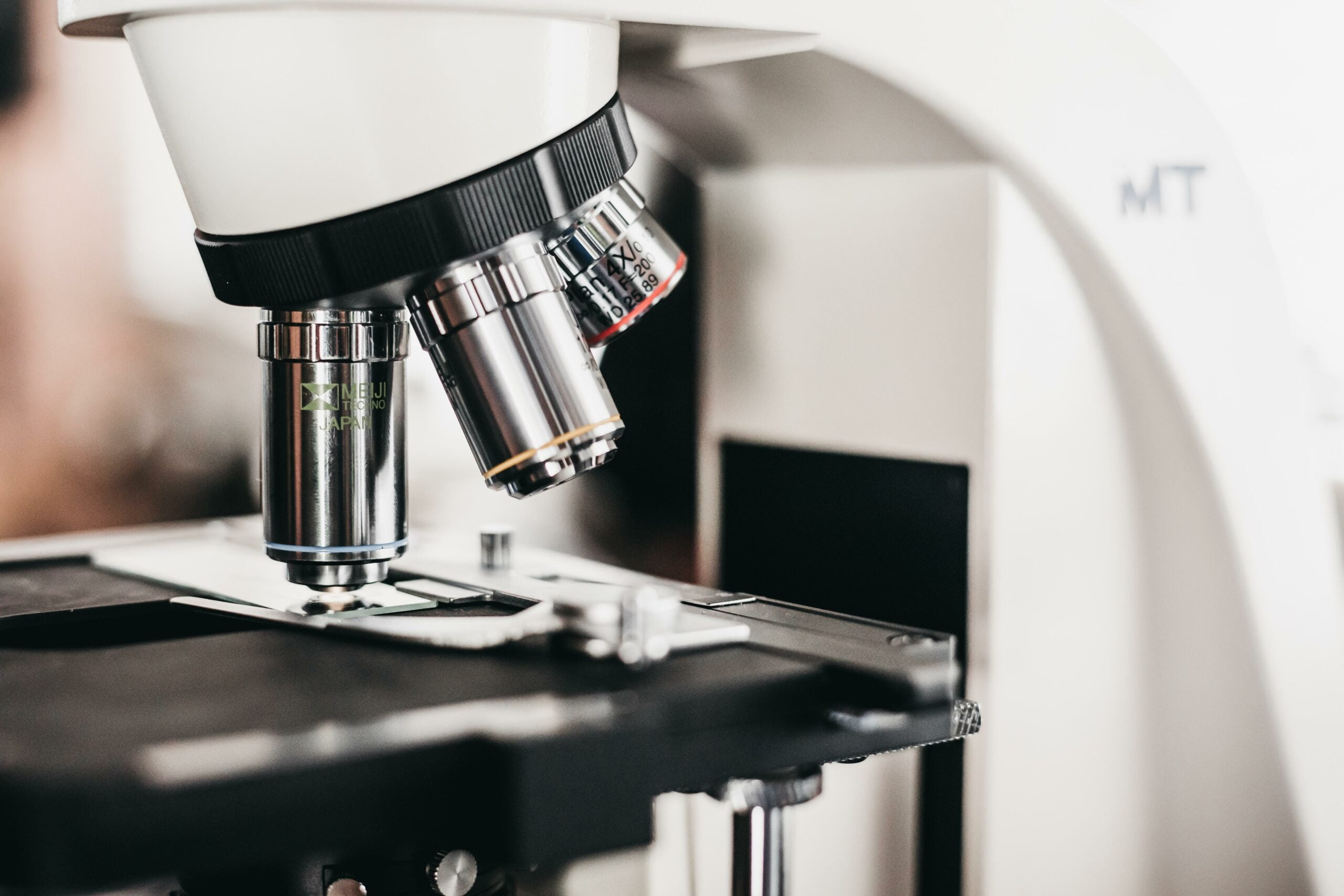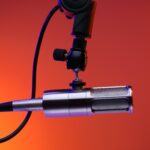Are you ready to embark on a captivating journey into the mesmerizing world of stereo microscopes? Get ready to uncover a treasure trove of intriguing facts and mind-boggling possibilities that lie within these optical marvels. In this article, we will delve into the hidden wonders of the microscopic realm, shedding light on the incredible capabilities and endless applications of stereo microscopes. Brace yourself for an enthralling exploration of this fascinating scientific instrument, as we unlock the marvels that hide in plain sight. Prepare to have your curiosity sparked and your perception of the minuscule forever transformed!

Interesting Facts About Stereo Microscopes
When it comes to mesmerizing scientific discoveries, few tools can rival the stereo microscope. These incredible instruments offer a captivating glimpse into the hidden wonders of the microscopic world. Get ready to unlock the secrets of stereo microscopes as we explore some intriguing facts that will leave you in awe!
1. Stereo microscopes have low magnification.
Unlike high-powered compound microscopes used in laboratories, stereo microscopes provide a lower level of magnification. They typically offer a magnification range of 10x to 40x, allowing us to view objects in a larger, more detailed form. This makes stereo microscopes ideal for examining items we can hold in our hands.
“Stereo microscopes may have low magnification, but their ability to present objects in incredible detail is truly astounding.”
2. Stereo microscopes create a 3-D image.
One of the most fascinating features of stereo microscopes is their ability to produce a three-dimensional image. By utilizing two separate optical paths for each eye, these microscopes create a sense of depth and perspective. This 3-D visualization enhances our understanding of the structure and characteristics of the objects we observe.
“With their impressive ability to reveal the true depth and shape of microscopic objects, stereo microscopes bring a whole new dimension to our exploration.”
3. Stereo microscopes do not require sample preparation.
Unlike some other microscopes that require complex sample preparation techniques, stereo microscopes offer the convenience of direct observation. By simply placing an object under the microscope, we can instantly examine its intricate details without the need for extensive preparation. This makes stereo microscopes a valuable tool for quick and efficient analysis.
“Gone are the days of time-consuming sample preparation. With stereo microscopes, you can dive straight into the fascinating world of microscale wonders.”
4. Stereo microscopes do not require the use of a bottom light.
While compound microscopes often rely on transmitted light from below to illuminate samples, stereo microscopes break tradition. These versatile instruments primarily utilize incident light, which illuminates objects from above. This lighting technique allows for clearer observation of the surface details, making stereo microscopes especially useful when examining specimens with complex textures.
“By capturing the finest surface features with ease, stereo microscopes eliminate the need for bottom lighting, opening up a whole new realm of exploration.”
5. Stereo microscopes are used to look at items you might hold in your hand, not cells.
Unlike compound microscopes that delve into the microscopic world of cells and tissues, stereo microscopes excel at examining larger objects. From insects and plants to jewelry and electronic components, these microscopes allow us to scrutinize details that would otherwise go unnoticed. With stereo microscopes, the everyday objects we hold in our hands become gateways to a world of exquisite intricacy.
“Stereo microscopes enable us to immerse ourselves in the hidden beauty of familiar objects, unlocking their secrets like never before.”
6. Stereo microscopes have separate objective lenses and eyepieces for each eye.
The unique design of stereo microscopes includes separate objective lenses and eyepieces for each eye. This binocular setup provides a comfortable viewing experience while maintaining the integrity of the 3-D image. By aligning the optical paths precisely, stereo microscopes deliver a mesmerizing depth perception that enhances our understanding of the subject.
“With their ingenious arrangement of lenses, stereo microscopes immerse us in a world of depth, enabling a truly captivating viewing experience.”
7. Stereo microscopes have a longer working distance than compound microscopes.
Working distance refers to the distance between the objective lens and the object being observed. Stereo microscopes boast a longer working distance compared to compound microscopes, allowing ample space for manipulation and analysis. This feature is particularly advantageous when examining larger specimens or objects that require additional tools for closer inspection.
“The generous working distance of stereo microscopes gives us the freedom to explore with ease, providing a remarkable level of flexibility during our investigations.”
8. Stereo microscopes are used for observing objects that do not allow light to pass through them.
Unlike compound microscopes that rely on light passing through transparent samples, stereo microscopes excel at examining opaque objects. By utilizing reflected light, these microscopes can reveal the intricate surface details of specimens that may block or absorb transmitted light. This versatility expands the range of objects we can explore using stereo microscopes.
“With their ability to shed light on opaque objects, stereo microscopes uncover the hidden beauty of surfaces that defy transparency.”
9. An estimated 99% of stereo applications employ less than 50x magnification.
Contrary to the high magnifications often associated with microscopes, stereo microscopes predominantly work within a magnification range of 10x to 40x. In fact, studies suggest that about 99% of applications for stereo microscopes fall within this lower magnification range. This further emphasizes their focus on providing detailed visual inspection rather than magnification alone.
“Although stereo microscopes don’t boast extreme magnification power, their exceptional clarity and versatility more than compensate.”
In conclusion, stereo microscopes defy expectations and offer a mesmerizing journey into the microscopic realm. With their low magnification, 3-D imaging capabilities, and ability to examine opaque objects, these instruments are nothing short of extraordinary. So, take a closer look at the world around you, unlock the wonders hidden in plain sight, and experience the awe-inspiring universe unveiled by stereo microscopes!
Sources:
- microscopeworld.com
- microscope-detective.com
- microscope.com
- microscopeinternational.com
- lambdageeks.com
A stereo microscope is a fascinating piece of scientific equipment that allows for a truly immersive viewing experience. With its unique dual eyepiece design, this type of microscope provides an incredible 3D view of objects, making it perfect for intricate tasks such as dissection, circuit board inspection, and jewelry making. If you’re curious to learn more about the many facts surrounding the stereo microscope, make sure to check out our comprehensive guide to the subject. Discover the history, principles, and various applications of this remarkable instrument by clicking here: facts about the stereo microscope. Whether you’re a scientific enthusiast or simply interested in expanding your knowledge, this article is sure to captivate and educate you. So go ahead, dive into the amazing world of the stereo microscope and unlock a new dimension of exploration.
FAQ
Question 1: How much magnification do stereo microscopes have?
Answer 1: Stereo microscopes have low magnification levels. An estimated 99% of stereo applications employ less than 50x magnification.
Question 2: Do stereo microscopes create a three-dimensional image?
Answer 2: Yes, stereo microscopes create a 3-D image. This feature enables users to observe objects with depth and perspective, making it easier to understand their structures.
Question 3: Is sample preparation required when using a stereo microscope?
Answer 3: No, sample preparation is not required when using a stereo microscope. Unlike compound microscopes, stereo microscopes allow for the examination of objects without the need for complex sample preparation techniques.
Question 4: Do stereo microscopes require bottom (transmitted) light for illumination?
Answer 4: No, stereo microscopes do not require the use of bottom (transmitted) light. They rely on incident (reflected) light to illuminate the objects being observed, which makes them suitable for examining items that do not allow light to pass through them.
Question 5: What types of objects are suitable for observation using a stereo microscope?
Answer 5: Stereo microscopes are used to look at items you might hold in your hand, rather than cells. They are ideal for observing various objects such as geological specimens, circuit boards, jewelry, insects, and plants, to name a few.
“`json
“`
- Unraveling Einstein’s Legacy: Who Inherited His Genius? - July 14, 2025
- Unlock Einstein’s Family Tree: Bernhard Caesar & Untold Stories - July 14, 2025
- Unveiling Bernhard Caesar Einstein: His Life & Albert Einstein’s Legacy - July 14, 2025
















